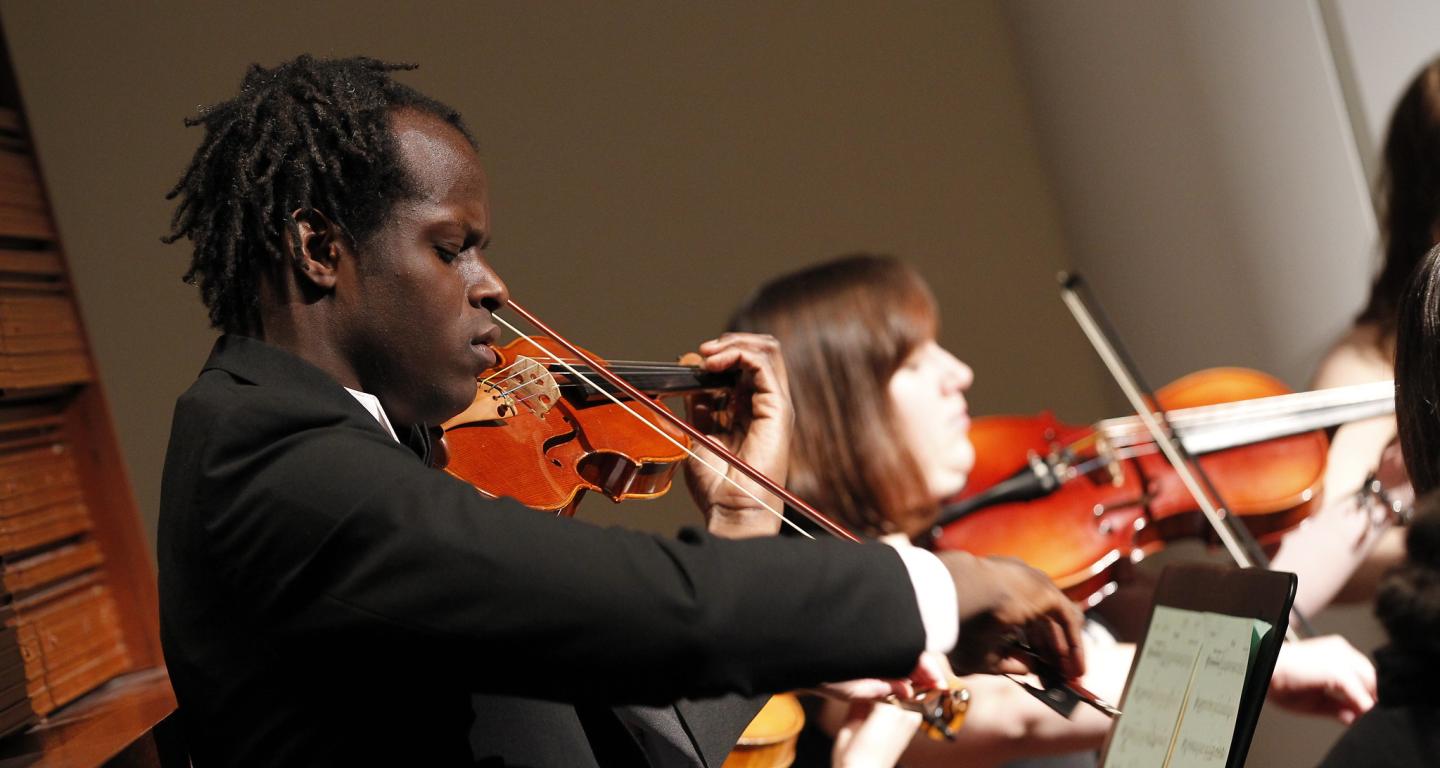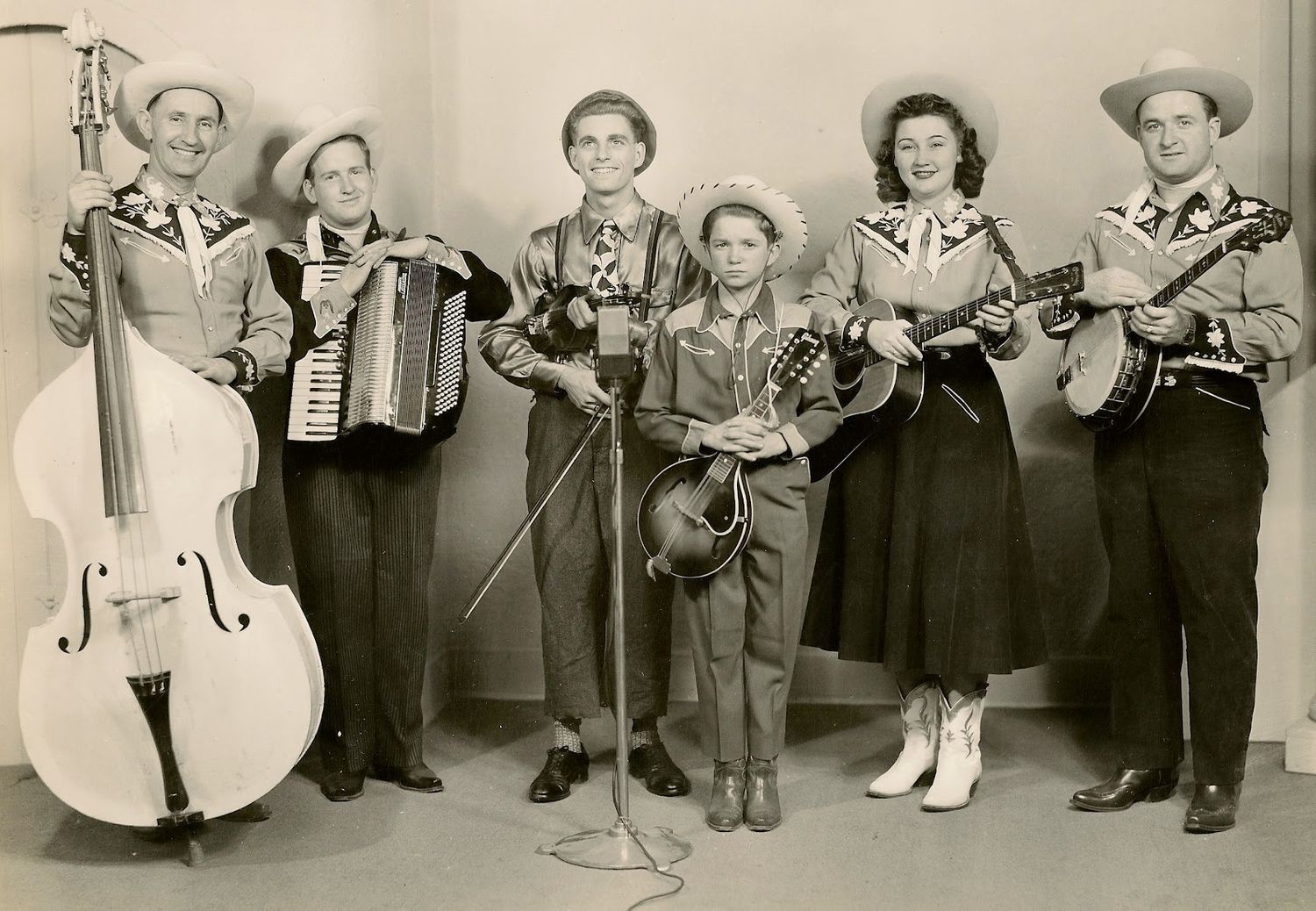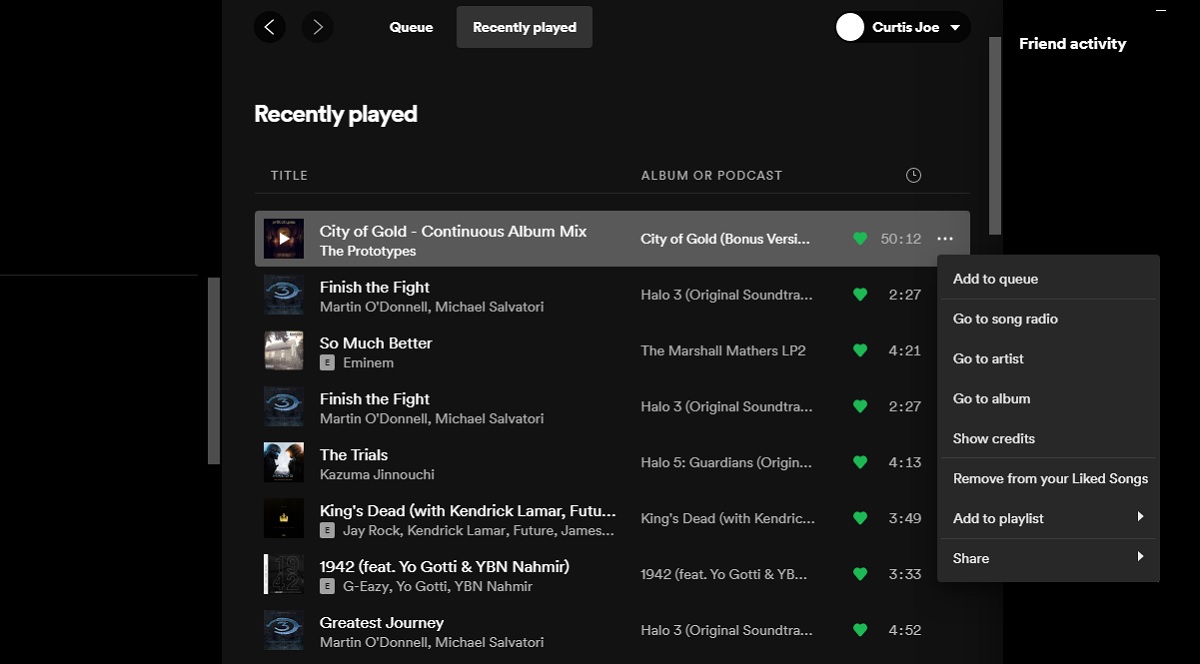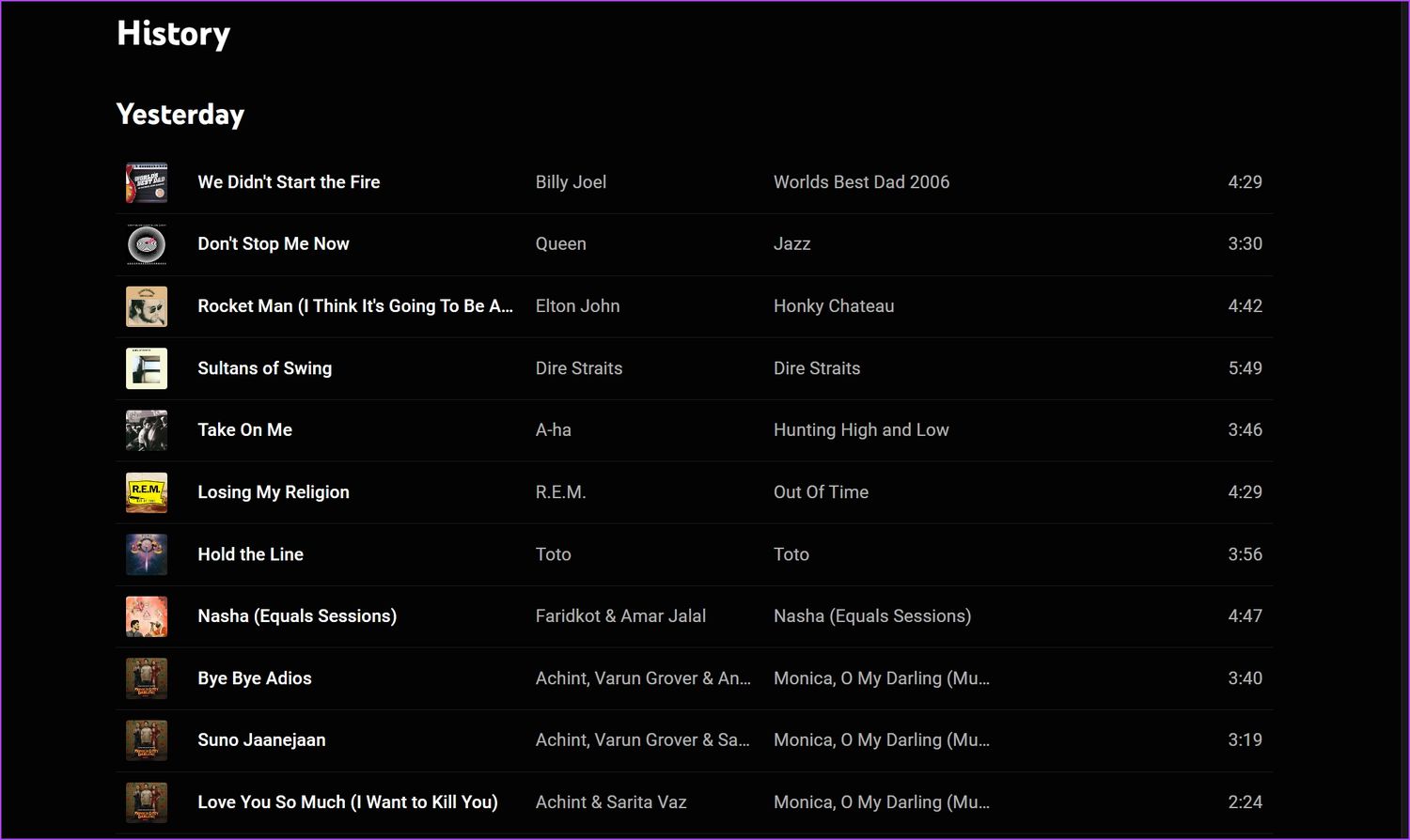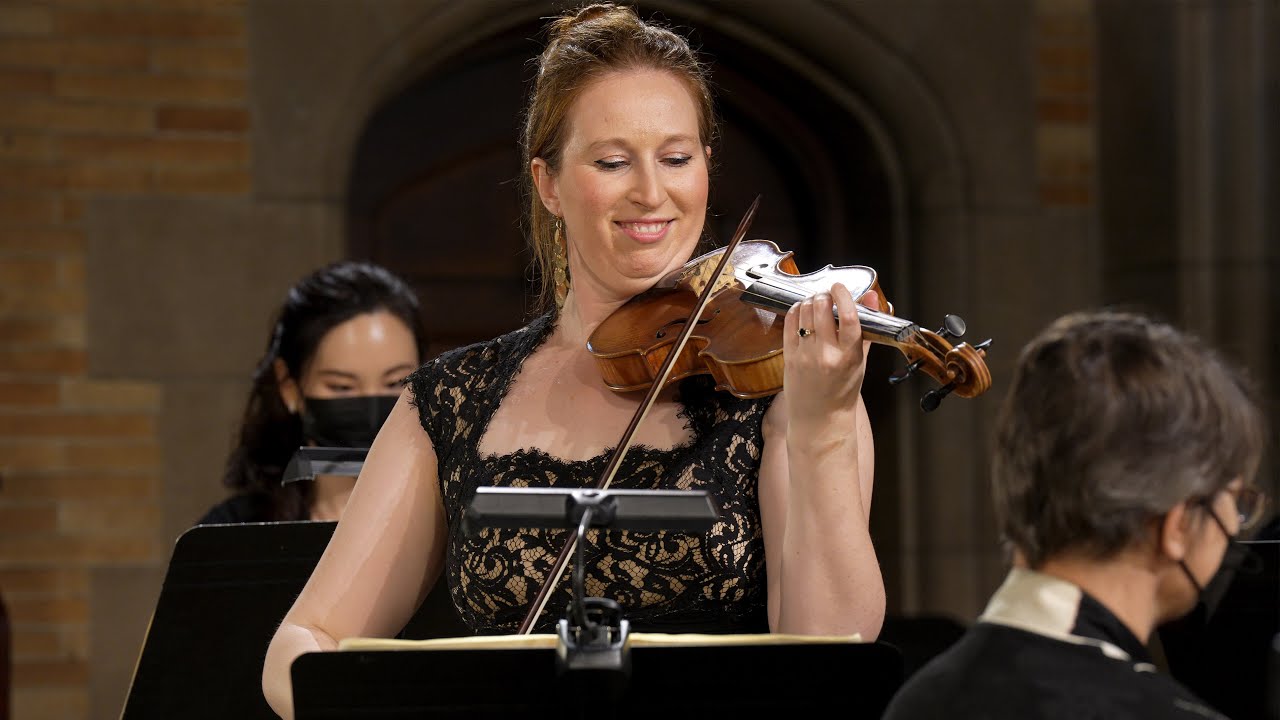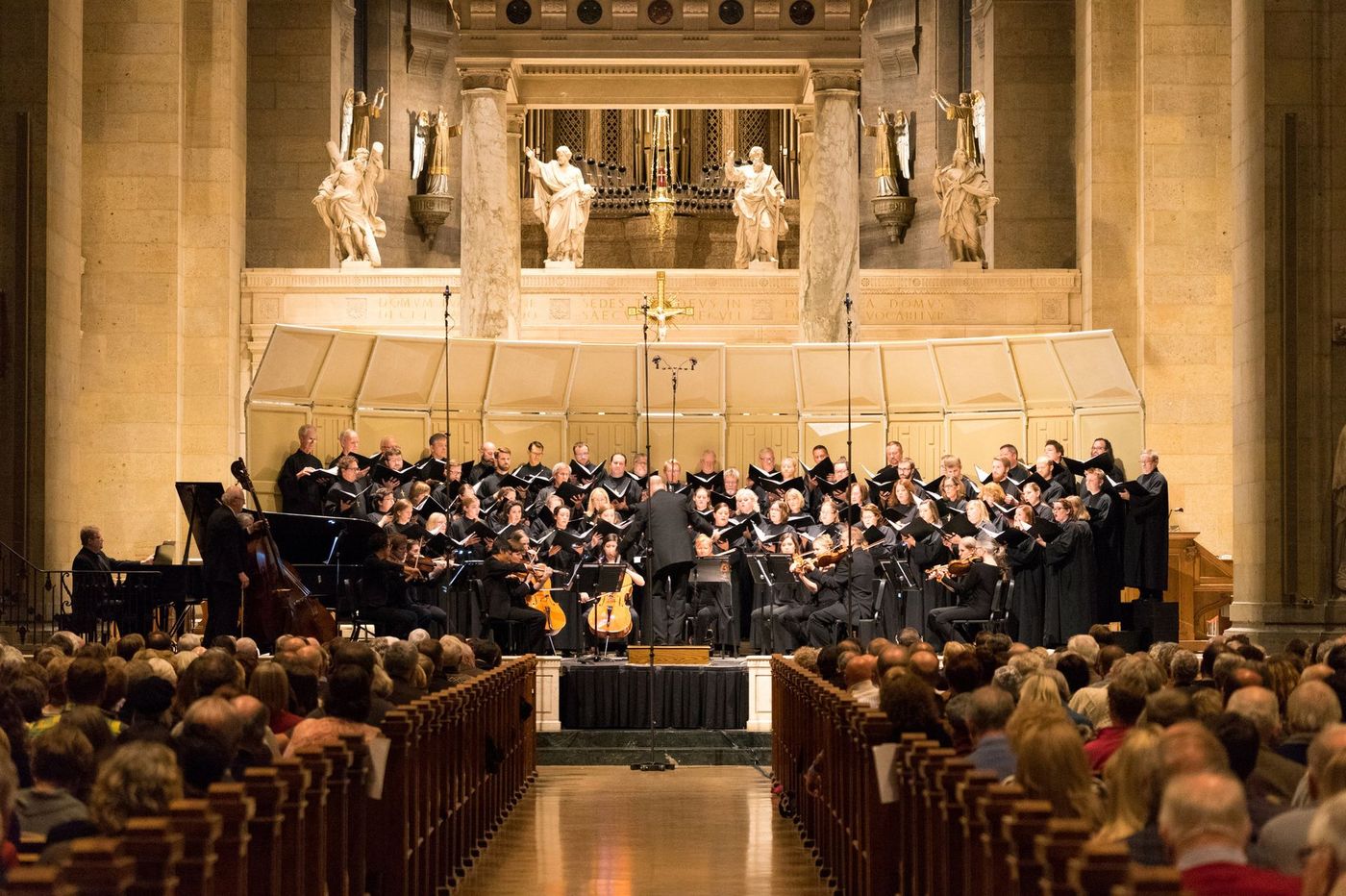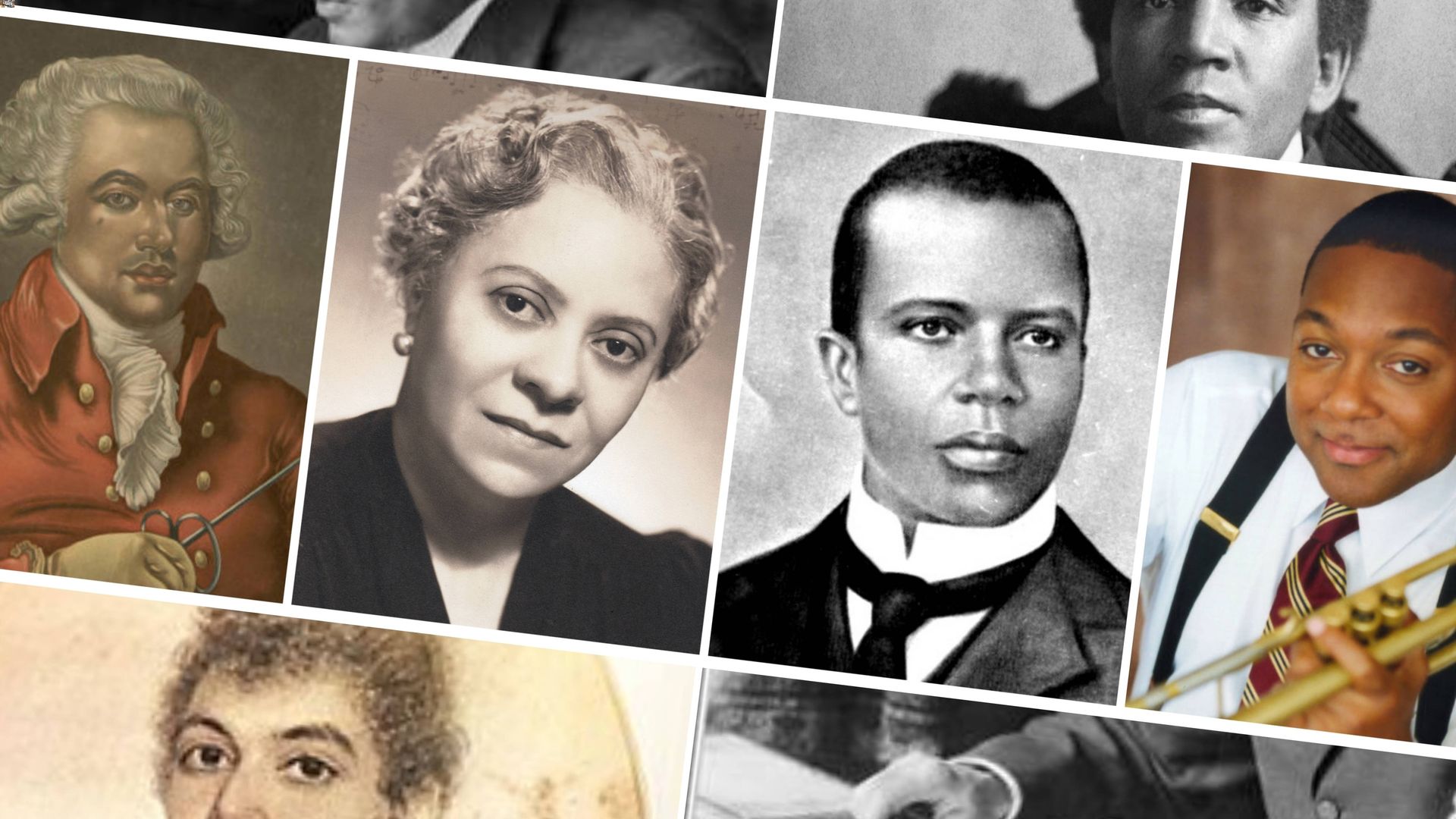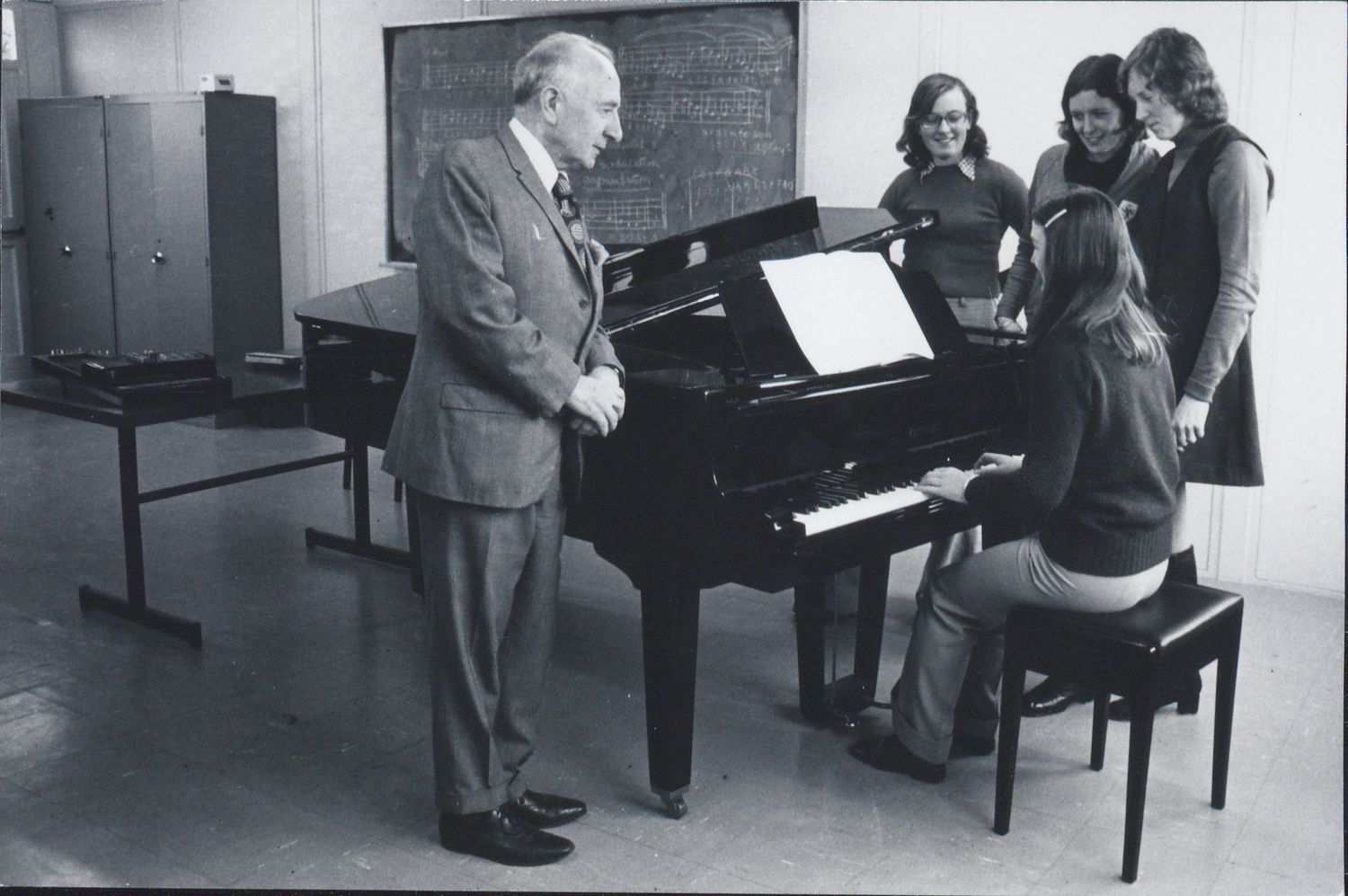Home>Events & Info>Music History>How To Study Music History
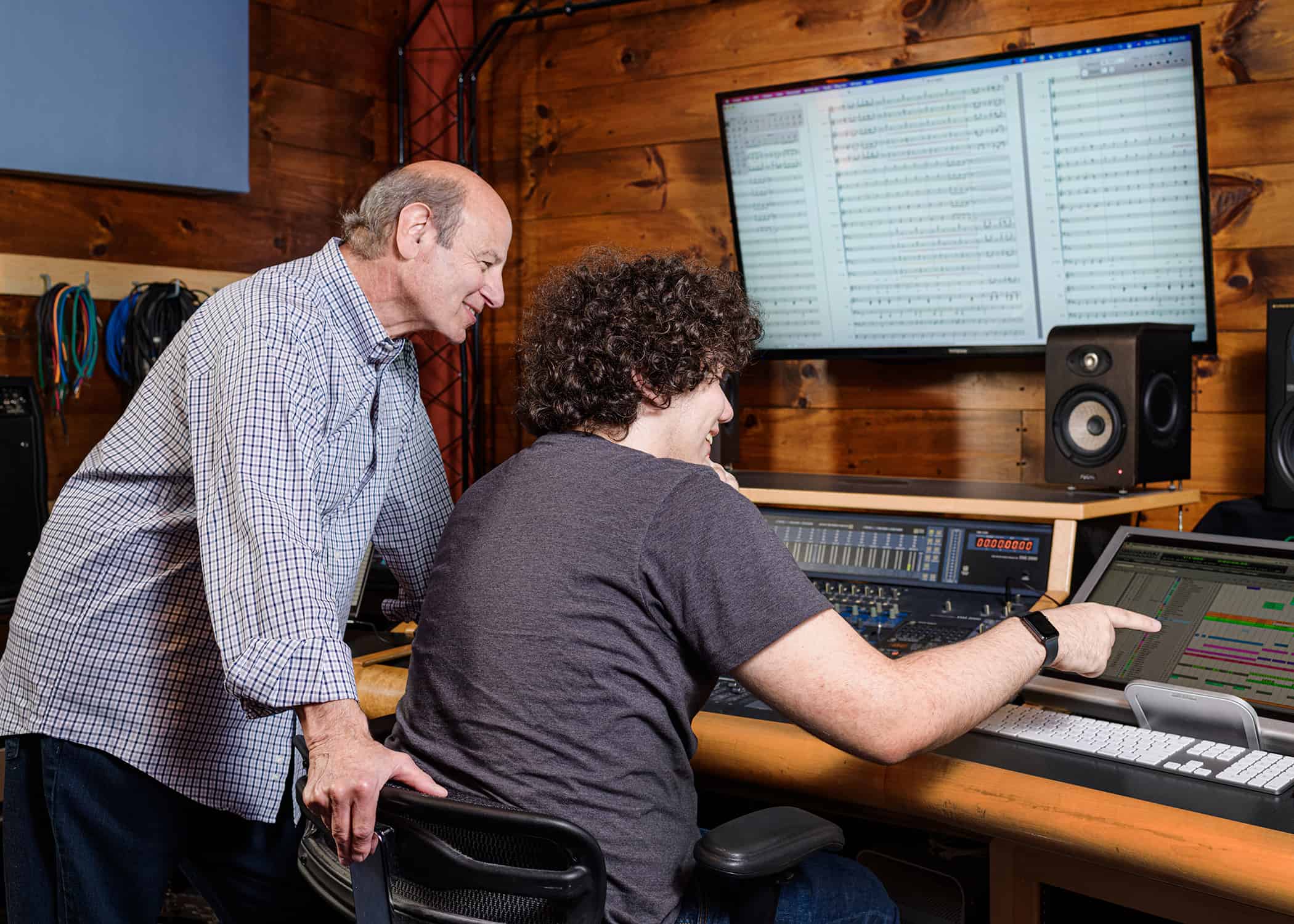

Music History
How To Study Music History
Modified: January 27, 2024
Learn how to study Music History and gain a deeper understanding of the evolution and significance of various musical genres. Discover key composers, styles, and historical milestones.
(Many of the links in this article redirect to a specific reviewed product. Your purchase of these products through affiliate links helps to generate commission for AudioLover.com, at no extra cost. Learn more)
Table of Contents
- Introduction
- Understanding the Importance of Music History
- Setting Goals for Studying Music History
- Developing a Study Schedule
- Basic Study Techniques for Music History
- Effective Note-taking Strategies
- Utilizing Resources and References
- Connecting Music History to Real-life Examples
- Analyzing and Critically Evaluating Musical Works
- Memorization Techniques for Remembering Key Facts and Dates
- Comparing and Contrasting Different Musical Periods
- Exploring the Influences of Music History on Contemporary Music
- Exam Preparation Strategies for Music History Courses
- Conclusion
Introduction
Music history is a fascinating subject that allows us to delve into the rich tapestry of sounds, rhythms, and melodies that have shaped our world. By studying music history, we gain a deeper understanding of how music has evolved over time and the impact it has had on society and culture.
For music enthusiasts, students, or aspiring musicians, studying music history is a vital step towards developing a comprehensive understanding of the art form. It provides insights into the origins of different musical genres, the influential composers who have shaped their respective eras, and the societal context in which these musical works were created.
Understanding music history allows us to appreciate the vast range of styles and techniques that have emerged throughout the centuries. From the intricacies of Baroque compositions to the emotional depth of Romantic symphonies, each musical period offers a unique perspective on the human experience.
Moreover, studying music history helps cultivate a discerning ear and a heightened sense of musical appreciation. It enables us to recognize the historical significance behind a piece, unravel the composer’s intentions, and interpret the intricate musical structures.
In this article, we will explore various techniques and strategies for studying music history effectively. Whether you are a student preparing for an exam or simply a music lover looking to deepen your knowledge, this guide will provide you with valuable insights and tips to make your journey through music history both enjoyable and enlightening.
Understanding the Importance of Music History
Music history serves as a lens through which we can understand the cultural, social, and artistic developments of different time periods. It provides valuable insights into the human condition, reflecting the values, beliefs, and emotions of various societies.
By studying music history, we gain a deeper appreciation for the interconnectedness of different artistic disciplines. Music often goes hand in hand with other art forms such as literature, visual arts, and dance. Understanding the historical context of musical works can shed light on the broader artistic movements and influences of the time.
Moreover, studying music history helps us grasp the evolution of musical styles and techniques. By exploring the works of composers from different eras, we can trace the development of musical ideas and innovations. This knowledge not only enhances our ability to analyze and interpret music but also provides inspiration and guidance for contemporary musical compositions.
Music is also a powerful tool for cultural preservation. Through the study of music history, we can preserve the musical traditions and heritage of different societies and ensure their continued appreciation and recognition. This includes traditional folk music, indigenous music, and cultural expressions specific to certain regions or communities.
Understanding music history is also crucial for musicians and composers. By studying the works of past masters, current musicians can draw inspiration, learn from their techniques, and build upon their musical legacy. It allows for a continuous dialogue between the past and present, enriching the artistic landscape.
Furthermore, music history provides a bridge between different generations. It allows us to celebrate the achievements of composers and musicians who have come before us, creating a sense of lineage and connection. This sense of continuity can foster a deeper appreciation for the musical heritage that we inherit and pass on to future generations.
In summary, studying music history is not only about learning the chronological sequence of events or memorizing names and dates. It is about recognizing the significance of music in human history, understanding its role as a cultural and artistic expression, and appreciating the timeless beauty and power of musical works.
Setting Goals for Studying Music History
Setting clear goals is essential for effective studying, and this holds true for studying music history as well. By establishing goals, you can stay focused and motivated throughout your learning journey. Here are some key aspects to consider when setting goals for studying music history:
- Identify your purpose: Determine why you want to study music history. Are you looking to deepen your knowledge as a music enthusiast? Are you studying for an academic course or exam? Understanding your purpose will help you shape your goals accordingly.
- Choose specific areas of focus: Music history spans a vast range of periods, composers, and genres. Consider which aspects interest you the most and select specific topics or periods to focus on. This will allow you to delve deeper into those areas and develop a more comprehensive understanding.
- Set a realistic timeline: Determine how much time you can dedicate to studying music history. Setting a realistic timeline will help you pace yourself and allocate sufficient time for research, reading, and exploration.
- Establish measurable objectives: Break down your larger goals into smaller, measurable objectives. For example, instead of aiming to “learn everything about Baroque music,” set objectives such as “familiarize myself with the major composers of the Baroque period” or “identify key characteristics of Baroque music.”
- Consider your learning style: Reflect on your preferred learning style and tailor your goals accordingly. If you are a visual learner, you might set goals to create visual representations or diagrams to aid your understanding. If you are an auditory learner, you could focus on listening to a variety of musical works from different periods.
- Track your progress: Keep a record of your progress and achievements. This can be done through a study journal, a checklist, or a digital tracking tool. Regularly reviewing your progress will provide a sense of accomplishment and keep you motivated to continue.
Remember that goal setting is a dynamic process, and it’s perfectly fine to adjust and refine your goals as you progress in your studies. It’s important to strike a balance between setting challenging goals and ensuring they are attainable within your available time and resources.
By setting clear and meaningful goals, you will have a sense of direction and purpose in your music history studies. This will make your learning experience more focused, rewarding, and enjoyable.
Developing a Study Schedule
Studying music history requires time and dedication, and having a well-structured study schedule is essential for effective learning. By creating a study schedule, you can allocate dedicated time to your music history studies and ensure consistent progress. Here are some steps to help you develop an effective study schedule:
- Evaluate your available time: Assess your weekly schedule and determine how much time you can realistically dedicate to studying music history. Consider your other commitments, such as work, school, or personal activities, and carve out dedicated study time accordingly.
- Set study goals: Refer to the goals you set for studying music history and break them down into smaller, manageable tasks. This will help you determine the specific topics or areas you need to cover within your study schedule.
- Divide your study time: Break your available study time into smaller, focused sessions. It’s generally more effective to study in shorter, concentrated bursts rather than in long, unfocused blocks. For example, you might allocate 30 minutes to an hour for each study session.
- Designate specific study days: Determine which days of the week will be dedicated to studying music history. Consistency is key, so aim for regular study sessions on the same days each week. This will help establish a routine and make it easier to stick to your study schedule.
- Consider your peak learning times: Take into account your personal energy levels and identify when you are most alert and receptive to learning. Schedule your study sessions during these peak times to optimize your focus and retention.
- Break it down into subtopics: Within each study session, break down your tasks into specific subtopics or themes. This will help you stay organized and ensure that you cover all the necessary material.
- Include review sessions: Set aside time in your schedule specifically for reviewing previously covered material. Regular review sessions will reinforce your understanding and help you retain information over the long term.
- Allow for flexibility: While it’s important to have a structured study schedule, also allow for flexibility and adaptability. Life events or unexpected circumstances may arise, so be prepared to adjust your schedule when needed.
Remember, the study schedule you develop should align with your personal preferences and learning style. Some individuals prefer studying in the morning, while others may be more productive in the evening. Tailor your study schedule to suit your needs and optimize your learning experience.
Lastly, remember to take breaks during your study sessions. Allow time for rest, relaxation, and rejuvenation to maintain a healthy balance and prevent burnout. Developing a study schedule is not just about finding time to study; it’s about creating a framework that supports effective learning and ensures maximum retention of the material.
Basic Study Techniques for Music History
When studying music history, utilizing effective study techniques can greatly enhance your understanding and retention of the material. Here are some basic study techniques to help you make the most of your music history studies:
- Read actively: Approach your music history readings with an active mindset. Take notes, highlight important points, and engage with the text by asking questions or making connections. This will help you absorb and internalize the information more effectively.
- Listen actively: As music is an aural art form, actively listening to the musical works associated with the time period or composer you are studying is crucial. Pay attention to the musical elements, such as melody, harmony, and form, and try to connect them to the historical context of the piece.
- Utilize visual aids: Visual aids, such as timelines, maps, and diagrams, can be powerful tools for understanding the chronological progression and geographical influences of music history. Create your own visual representations or make use of online resources to enhance your comprehension.
- Make connections: Music history is interconnected with other fields, such as art, literature, and philosophy. Look for connections between the music you are studying and the broader cultural and historical context. This will provide you with a more holistic understanding of the music and its societal significance.
- Practice active recall: Instead of passively reviewing the material, actively recall key facts, dates, and concepts without referring to your notes. This exercise strengthens your memory and comprehension of the subject matter.
- Engage in discussions: Find opportunities to discuss music history topics with fellow students, music instructors, or online communities. Engaging in conversations about the subject matter can deepen your understanding and expose you to different perspectives.
- Create mnemonic devices: Mnemonic devices, such as acronyms or rhymes, can be helpful for memorizing information. Create your own mnemonics to remember important composers, musical periods, or significant events.
- Teach or explain the material to someone else: One of the most effective ways to solidify your understanding of music history is by teaching or explaining the material to someone else. This forces you to articulate your knowledge and helps you identify any gaps in your understanding.
- Find real-life examples: Look for real-life examples of music history in action. Attend concerts, listen to different interpretations of the same piece, and explore how music of a particular era influenced other art forms. This experiential approach can bring the subject matter to life and foster a deeper appreciation.
- Take breaks: Lastly, remember to take breaks during your study sessions. Give your mind time to rest and consolidate the information. Taking breaks can actually improve your overall productivity and retention.
Experiment with these study techniques to find what works best for you. Each individual has their own learning style, so adapt these techniques to suit your preferences and learning needs. The goal is to actively engage with the material, make meaningful connections, and reinforce your understanding of music history.
Effective Note-taking Strategies
Note-taking is a vital skill when studying music history as it helps organize and consolidate information, making it easier to review and retain. Here are some effective note-taking strategies to enhance your music history studies:
- Use abbreviations: Develop a system of abbreviations and symbols to speed up your note-taking process. This allows you to capture key information more efficiently while keeping your notes concise.
- Use headings and subheadings: Organize your notes using clear headings and subheadings. This helps you categorize information and makes it easier to review specific topics later.
- Use the Cornell Note-taking Method: The Cornell Note-taking Method is a popular technique that involves dividing your note paper into three sections: a main notes section, a section for summaries, and a section for key questions or cues. This method helps you organize your notes and provides a structure for further review.
- Highlight key points: Use highlighters or different colored pens to emphasize important information in your notes. This makes key concepts or details stand out, aiding comprehension and recall.
- Include visuals and diagrams: When applicable, incorporate visuals, such as musical symbols, diagrams, or illustrations, to support your notes. Visual aids can enhance understanding and serve as memory triggers.
- Summarize in your own words: Instead of mindlessly copying information, try to summarize the main ideas in your own words. By expressing the content in a way that makes sense to you, you are more likely to retain and understand the material.
- Make connections: As you take notes, try to make connections between different concepts or pieces of information. Linking ideas together helps create a network of understanding and facilitates recall.
- Review and revise your notes: Regularly review and revise your notes to reinforce learning and ensure accuracy. This may involve condensing information, adding additional details, or clarifying unclear points.
- Combine handwritten and digital notes: Experiment with a combination of handwritten and digital note-taking methods. Handwriting can boost retention, while digital notes offer the advantage of easy editing and searching capabilities.
- Be organized: Keep your notes organized and easily accessible. Whether you prefer using notebooks, folders, or digital platforms, having a system in place ensures that you can find and review your notes efficiently.
Remember that note-taking is a personal process, and it’s important to find a method that works best for you. Experiment with different techniques and adapt them to suit your learning style and preferences. The key is to create notes that are clear, organized, and meaningful to enhance your understanding and retention of music history.
Utilizing Resources and References
When studying music history, it’s crucial to have access to a variety of resources and references to enrich your understanding of the subject. Here are some effective ways to utilize resources and references in your music history studies:
- Textbooks and academic literature: Start with reputable music history textbooks and academic literature. These provide a solid foundation of knowledge and often include in-depth analysis, historical context, and references to further readings.
- Online platforms and databases: Take advantage of online platforms and databases dedicated to music history. Websites, such as JSTOR, Project MUSE, and Oxford Music Online, provide a wealth of scholarly articles, books, and resources that can enhance your research and understanding.
- Music recordings and streaming platforms: Listen to recordings of the musical works associated with the time periods and composers you are studying. Streaming platforms like Spotify, YouTube, and Naxos Music Library offer a vast collection of classical and historical recordings.
- Music scores and sheet music: Access music scores and sheet music to follow along with the compositions and analyze their structure and notation. Libraries, music stores, and online repositories like IMSLP offer a wide range of scores that you can study.
- Documentaries and podcasts: Explore documentaries and podcasts focused on music history. These audiovisual resources offer engaging narratives and expert insights that bring the subject to life. Platforms like BBC Music Magazine, Naxos Podcasts, and Classic FM have a plethora of content available.
- Music museums and exhibits: Visit music museums and exhibits dedicated to music history. These provide a tangible and immersive experience, showcasing historical instruments, artifacts, and information about composers and musical movements.
- Engage with experts: Reach out to music historians, professors, or experts in the field. Attend conferences, seminars, or webinars where you can interact with professionals and gain valuable insights.
- Join study groups or forums: Collaborate with fellow music history enthusiasts by joining study groups or online forums. These communities allow for discussions, resource sharing, and different perspectives on the subject matter.
- Explore primary sources: Delve into primary sources such as historical documents, letters, and manuscripts related to music history. Online archives, libraries, and museums often offer access to these materials, providing a firsthand glimpse into the music of the past.
- Consider supplementary materials: Look for supplementary materials like biographies, writings, and autobiographies of composers. These offer personal insights and anecdotes that illuminate the creative process and historical context.
By utilizing a diverse range of resources and references, you can deepen your understanding and engage with music history from multiple perspectives. Remember to critically evaluate the credibility and relevance of the sources you choose, and always cite and acknowledge your references to maintain academic integrity in your studies.
Connecting Music History to Real-life Examples
Connecting music history to real-life examples is a powerful way to deepen your understanding and appreciation of the subject. By exploring how music history intersects with everyday life, you can see the relevance and influence of music in different contexts. Here are some ways to connect music history to real-life examples:
- Attend live performances: Experience the magic of live music performances and witness how music from different historical periods comes to life on stage. Whether it’s a symphony, opera, or chamber music concert, seeing professional musicians perform can evoke emotions and enhance your understanding of the music.
- Listen to contemporary music inspired by historical periods: Explore modern compositions that draw inspiration from specific historical periods or styles. Many contemporary composers incorporate elements of classical, baroque, or romantic music into their works, providing a bridge between the past and present.
- Explore music in film and television: Movies and TV shows often use music to set the mood, depict a particular era, or evoke certain emotions. Pay attention to the music choices in historical films or period dramas, as they can further your understanding of the time period and its musical characteristics.
- Discover music in cultural celebrations: Many cultural celebrations and festivals incorporate traditional music that reflects the history and heritage of a particular region or community. Attend cultural events or explore recordings of music performed during holidays and festivities to gain insight into the cultural significance of music in different contexts.
- Visit historical music venues and landmarks: Explore historical music venues, such as concert halls, opera houses, or cathedrals, that have played a significant role in the music history of a particular city or region. These spaces often retain the ambiance and architectural features that shaped the performance of music during specific eras.
- Examine music’s role in social and political movements: Music has often played a role in social and political movements, serving as a voice for change and expressing the hopes and struggles of communities. Explore how music has been used as a form of protest, unity, or cultural expression throughout history.
- Study the influence of music on other art forms: Investigate how music has influenced other art forms, such as literature, visual arts, or dance. Understanding the interplay between music and these disciplines can provide insights into the broader cultural and artistic movements of a particular era.
- Discover the music of your own heritage: Explore the music of your own cultural heritage and its historical context. Investigate folk songs, traditional music, and indigenous musical traditions to develop a personal connection with music history.
By connecting music history to real-life examples, you develop a deeper understanding of how music has shaped and continues to shape our lives. It allows you to see the relevance of music history in contemporary society and appreciate the ongoing dialogue between the past and present in the world of music.
Analyzing and Critically Evaluating Musical Works
Analyzing and critically evaluating musical works is an essential skill in music history studies. It allows you to delve beneath the surface and explore the intricacies of compositions, gaining a deeper understanding of the historical context and artistic choices. Here are some key aspects to consider when analyzing and critically evaluating musical works:
- Form and structure: Examine the overall structure and form of the musical work. Identify the different sections, such as the exposition, development, and recapitulation in a sonata form or the multiple movements in a symphony. Analyzing the form helps you understand how the composer organized their musical ideas.
- Harmony and tonality: Pay attention to the harmonies and tonalities within the musical work. Analyze the chords and progressions used, and consider how they contribute to the overall emotional and expressive qualities of the piece. Look for key changes and modulations, which can provide insights into the composer’s intentions.
- Melody and theme: Explore the melodies and themes present in the musical work. Analyze their structure, contour, and development throughout the composition. Consider how the composer develops and transforms these melodic ideas to create a sense of unity and coherence.
- Rhythm and meter: Pay attention to the rhythmic and metrical aspects of the musical work. Analyze the patterns, syncopations, and rhythmic devices employed by the composer. Consider how the rhythmic choices contribute to the overall character and energy of the piece.
- Instrumentation and orchestration: Evaluate the choice and use of instruments in the composition. Examine how the composer utilizes different timbres, dynamics, and techniques to achieve specific expressive effects. Consider how the orchestration enhances the emotional and textural qualities of the music.
- Expression and dynamics: Explore the expressive elements of the musical work. Analyze the dynamics, articulations, and phrasing to understand how the composer intended the music to be performed and interpreted. Consider how these expressive markings contribute to the overall emotional impact of the piece.
- Context and cultural influences: Consider the historical and cultural context in which the musical work was created. Explore how societal, political, or artistic influences may have shaped the composition. Analyze how the music reflects the aesthetics, values, and trends of its time.
- Comparison and contrast: Compare the musical work to other works from the same composer or historical period. Analyze the similarities and differences in style, structure, and thematic material. Consider how the work fits within the broader musical landscape and its unique contributions.
- Critical evaluation: Develop your own critical evaluation of the musical work. Assess its strengths and weaknesses, its originality, and its contribution to the musical canon. Consider how the piece connects to the composer’s overall body of work and its lasting impact on music history.
By analyzing and critically evaluating musical works, you gain a deeper appreciation for the artistic choices and historical significance behind the compositions. It allows you to engage with music on a deeper level and uncover the complexities that make each piece a unique masterpiece.
Memorization Techniques for Remembering Key Facts and Dates
Memorizing key facts and dates is an essential aspect of studying music history. However, it can be challenging to retain a large amount of information. Fortunately, there are several effective memorization techniques that can help you remember important facts and dates. Here are some techniques you can try:
- Break it down: Instead of trying to memorize everything at once, break the information into smaller, manageable chunks. Organize the facts and dates by categories or periods, and focus on memorizing one chunk at a time.
- Create mnemonics: Mnemonics are memory aids that help you associate information with something more memorable. You can create acronyms, rhymes, or visual images that represent key facts or dates. These mnemonic devices can make it easier to recall information when needed.
- Use flashcards: Write down key facts and dates on flashcards and use them as a study tool. Review the flashcards regularly to reinforce your memory. You can also use online flashcard platforms for digital practice.
- Associate information with familiar cues: Connect the facts and dates to concepts or cues that are already familiar to you. For example, you can associate a composer’s birth year with a historical event or a well-known melody.
- Create a mnemonic story: Construct a story or narrative that includes the facts and dates you need to remember. By weaving the information into a story with vivid details, you can make it more memorable and easy to recall in the correct order.
- Teach someone else: Teach the material to someone else. When you explain the facts and dates to someone else, it reinforces your understanding and retention. You can also ask the person to quiz you on the information to test your memory.
- Make connections: Look for connections between the facts and dates. Identify patterns, themes, or cause-and-effect relationships that can help you understand the historical context and remember the information more effectively.
- Create visual representations: Use visual aids or diagrams to represent the information you need to memorize. Create charts, maps, or timelines that visually illustrate the facts and dates. Visual representations can be powerful memory triggers.
- Repeat and review: Regularly review the information you are trying to memorize. Repetition is key to reinforce memory. Set aside dedicated review sessions where you go over the facts and dates multiple times until they become firmly ingrained in your memory.
- Practice active recall: Test your memory by actively recalling the facts and dates without referring to your notes or study materials. This exercise strengthens your memory and helps you identify any areas that need further focus.
Experiment with these techniques and find what works best for you. Everyone has a different learning style, so adapt these strategies to suit your preferences. By employing effective memorization techniques, you can enhance your ability to remember key facts and dates in music history and perform well in exams or discussions.
Comparing and Contrasting Different Musical Periods
Comparing and contrasting different musical periods is a fundamental aspect of studying music history. It allows you to understand the evolution of musical styles and appreciate the distinct characteristics of each period. Here are some key points to consider when comparing and contrasting different musical periods:
- Historical context: Examine the historical events and societal influences that shaped each musical period. Consider the political, cultural, and technological developments that had an impact on the music of the time.
- Composers and their contributions: Study the major composers and their significant contributions within each period. Investigate their stylistic innovations, techniques, and notable compositions. Compare their approaches to composition and how they pushed the boundaries of music during their time.
- Artistic movements: Explore the artistic movements that coexisted with each musical period. Consider how music was influenced by the broader artistic trends of the time, such as the visual arts, literature, or philosophical ideas.
- Characteristics of musical style: Analyze the musical styles and characteristics that define each period. Look at elements like melody, harmony, rhythm, form, and instrumentation. Compare and contrast the ways in which these elements were utilized and evolved throughout different periods.
- Performance practices: Investigate the performance practices and conventions that were specific to each period. Consider aspects such as ornamentation, improvisation, ensemble size, and the use of period-specific instruments.
- Developments in notation and musical theory: Examine how musical notation and theoretical concepts developed over time. Compare the approaches to notation, harmony, counterpoint, and other theoretical elements in different periods.
- Audience reception and cultural impact: Reflect on how the music of each period was received by audiences and its cultural impact. Consider the societal attitudes towards music, the role of music in religious and secular contexts, and how music was enjoyed and consumed during different eras.
- Influences and connections: Identify the influences and connections between different musical periods. Explore how earlier periods influenced the development of later ones and how composers drew inspiration from their predecessors. Discover instances where composers paid homage or intentionally broke away from the traditions of the past.
- Musical forms and innovations: Analyze the forms and innovations characteristic of each musical period. Compare the types of compositions, such as symphonies, concertos, operas, or chamber music, and how they were shaped by the conventions and styles of the time.
- Evolution of musical aesthetics: Track the evolution of musical aesthetics and ideals. Compare the values, goals, and philosophies that guided composers and musicians in different periods, and how these ideals transformed over time.
By comparing and contrasting different musical periods, you gain a deeper understanding of the diverse range of musical expressions and the evolutionary trajectory of music history. It allows you to appreciate the unique contributions of each period and recognize the interconnectedness of musical styles throughout centuries.
Exploring the Influences of Music History on Contemporary Music
Music is an art form that is constantly evolving and building upon its rich historical foundation. Here, we explore the influences of music history on contemporary music and how the legacy of past musical styles and techniques continues to shape the music of today:
Revival and reinterpretation: Many artists and bands draw inspiration from specific musical periods or genres, reviving and reinterpreting them in their own unique ways. This can range from incorporating elements of classical music, jazz, or blues into contemporary compositions, to creating fusion genres that blend various musical styles.
Sampling and remixing: Contemporary music frequently samples and remixes music from the past, transforming older recordings into new compositions. This borrowing of musical elements allows for a bridge between different eras, creating a dialogue between the past and the present.
Musical techniques and structures: The techniques and structures established in music history provide a toolkit for contemporary composers. Whether it’s complex harmonies, contrapuntal melodies, or intricate arrangements, these historical techniques form the foundation for modern composition and production.
Innovations in technology: Technological advancements have played a significant role in shaping the sound of contemporary music. From the use of synthesizers and electronic instruments to digital recording and production techniques, technology allows musicians to push boundaries and explore new sonic possibilities.
Cultural references and nostalgia: Musicians often evoke the sounds and styles of the past as a form of cultural reference or nostalgia. This can be seen in the resurgence of vinyl records, the popularity of retro-inspired genres like synthwave, or the incorporation of vintage aesthetics in music videos and album artwork.
Global musical influences: The interconnectedness of the modern world has allowed for the cross-pollination of musical styles and traditions from different cultures. Contemporary music readily embraces global influences, incorporating elements from various musical traditions and creating hybrid genres that defy categorization.
Social and political commentary: Music has long served as a vehicle for social and political commentary, and contemporary musicians continue to draw inspiration from historical precedents. Through their lyrics and musical choices, artists create a platform to address current issues, building upon a rich tradition of protest songs and musical activism.
Evolution of popular music genres: Popular music genres, such as rock, pop, hip-hop, and R&B, have evolved over time, absorbing influences from past musical styles. These genres borrow elements from diverse musical traditions, adapting and transforming them to create something new and relevant.
Collaborations and cross-genre experimentation: In the spirit of exploration, musicians often collaborate with artists from different genres or incorporate elements from multiple styles into their work. These cross-genre collaborations create exciting and innovative fusions that push the boundaries of musical expression.
By exploring the influences of music history on contemporary music, we can see how the past continues to inform and inspire the present. The ongoing dialogue between different eras and musical styles enriches our understanding of music as a dynamic and ever-evolving art form.
Exam Preparation Strategies for Music History Courses
Preparing for exams in music history courses requires a systematic and focused approach. By employing effective strategies, you can maximize your study time, reinforce your understanding of the material, and perform well in your exams. Here are some exam preparation strategies for music history courses:
- Organize your notes and materials: Review and organize your lecture notes, readings, and other study materials. Create a study guide or outline that summarizes key concepts, composers, periods, and important dates. Having a well-structured overview of the course content will help you prioritize and focus your studying.
- Review regularly: Avoid cramming and instead review the material regularly throughout the course. This will reinforce your understanding and retention of the information. Set aside dedicated time each week to go over previous topics and ensure they stay fresh in your mind.
- Practice with past exams or sample questions: Familiarize yourself with the types of questions that may be asked in the exam. Seek out past exams or sample questions provided by your instructor and practice answering them within a time limit. This will help you become familiar with the exam format and develop your ability to formulate thorough and concise responses.
- Create study aids: Develop study aids, such as flashcards, mnemonic devices, or visual aids, to facilitate memorization of key facts, dates, and terms. These study aids can be especially helpful for quick recall during the exam.
- Engage with the music: Actively listen to the musical pieces associated with the course material. Pay attention to the musical elements, styles, and techniques. Make connections between the music and the historical context in which it was created. Engaging with the music will deepen your understanding and make it easier to recall specific details during the exam.
- Form study groups: Collaborate with classmates and form study groups. Dividing the workload and discussing the material with others can enhance your understanding and provide different perspectives. Quiz each other, compare notes, and engage in discussions to reinforce your learning.
- Seek clarification: If you have any confusion or questions about the material, don’t hesitate to seek clarification from your instructor or classmates. Clearing up any uncertainties will strengthen your knowledge and prevent misunderstandings that could impact your exam performance.
- Simulate exam conditions: As the exam approaches, simulate exam conditions by setting aside a designated time and space to take practice exams or complete sample questions. This will help you build stamina and familiarize yourself with the time constraints of the actual exam.
- Take care of yourself: Prioritize self-care to ensure you are in the best mental and physical state for the exam. Get enough sleep, eat well, and engage in stress-relieving activities such as exercise or meditation. Taking care of your well-being will help you better concentrate and retain information.
Remember, effective exam preparation is an ongoing process. Start early, remain consistent in your review, and approach your studies with a focused mindset. With these strategies, you can feel confident and well-prepared for your music history exams.
Conclusion
Studying music history is a rewarding journey that allows us to explore the rich legacy of music and its profound impact on society. By understanding the importance of music history, setting clear goals, and developing effective study techniques, we can delve into the depths of different musical periods, composers, and genres.
Throughout our studies, we have learned the significance of connecting music history to real-life examples, fostering a deeper appreciation for the relevance and influence of music in everyday life. We have explored the ways in which music history has shaped and continues to shape contemporary music, creating a captivating dialogue between the past and the present.
Analyzing and critically evaluating musical works has expanded our understanding of the intricacies and unique characteristics of different periods and styles. Meanwhile, utilizing resources and references has allowed us to access a wealth of knowledge and diverse perspectives, enhancing our comprehension of music history.
Memorization techniques have provided us with tools to effectively remember key facts and dates, while comparing and contrasting different musical periods has given us a comprehensive view of how music has evolved over time. Exam preparation strategies have enabled us to approach music history exams with confidence and achieve success.
As we conclude our exploration of music history, let us remember that studying this fascinating subject is not just about acquiring knowledge, but about immersing ourselves in the stories, emotions, and cultural expressions that music encapsulates. By studying music history, we gain a profound appreciation for the artistic achievements of composers, the societal forces that shaped their works, and the ongoing legacy they have left behind.
Whether you are a student, a music enthusiast, or a professional musician, the study of music history serves as a gateway to a deeper understanding and reverence for the beauty and significance of music. So, let us embark on this journey of exploration and discovery, enriching our musical experiences and connecting with the timeless power of music throughout the ages.

